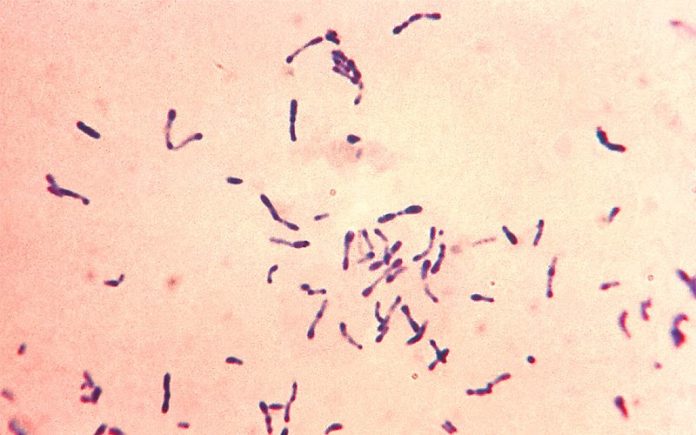
Photo Credit: CDC
New cases of an illness that was common in the Victorian era have been discovered in the state of New South Wales, Australia.
According to the Daily Mail, a 6-year-old child has been diagnosed with diphtheria of the throat in Northern NSW, marking the state’s second incident of the disease in this century.
The child is a close family contact of the first reported case, which involves a 2-year-old toddler who is still in intensive care.
“The newly diagnosed child, who was not vaccinated against diphtheria, is being cared for at a local health unit where they were admitted as a precaution,” Daily Mail reported.
TRENDING: Happy Independence Day 2022 – Freedom Isn’t Free – This Year Brings New Life and New Signs of Hope
To limit the risk of transmission, other close contacts of both young children were given post-exposure prophylaxis, including
antibiotics and immunization.
“North Coast Public Health director Paul Douglas said there was no ongoing risk to the broader community but families should be alert and review their children’s immunization status,” the news outlet added.
“Diphtheria is very rare in Australia due to our longstanding childhood immunization program. However, the disease has very serious outcomes and can be fatal,” Douglas said.
According to the Guardian, diphtheria killed more people in Australia than any other infectious disease in the early 1900s.
What do we know about diphtheria? Based on the Australian Government Department of Health:
Diphtheria is a contagious disease, spread by an infected person’s coughing, sneezing or open wounds. Symptoms include a sore throat and breathing problems. Diphtheria can affect people of all ages but can be prevented with vaccination. Treatment includes antibiotics and diphtheria anti-toxin.
Diphtheria is caused by the spread of a bacterium, Corynebacterium diphtheria. When a person catches diphtheria, the bacteria release a toxin, or poison, into the person’s body. The toxin infects the upper airways, and sometimes the skin, causing a membrane to grow across the windpipe. This makes it hard to breathe and if the membrane completely blocks the windpipe can lead to suffocation and death. The heart and nervous system can also be damaged.
Diphtheria symptoms include:
- sore throat
- swallowing problems
- mild fever
- breathing problems, which may be severe
- a grey or green membrane at the back of the throat.
Symptoms usually start about 2 to 5 days after catching diphtheria.
Diphtheria can affect people at any age. People who haven’t been immunised have the highest risk of serious disease.
Diphtheria spreads:
- when an infected person coughs or sneezes and you breathe it in
- by direct contact with a wound infected with diphtheria
- when you touch things an infected person has coughed or sneezed on.
If you have diphtheria, you can help stop the disease spreading by:
- staying away from childcare, school, work or other places where you could spread the infection – your doctor will tell you when you’re no longer infectious
- washing your hands often
- covering your coughs and sneezes.
Your doctor can diagnose diphtheria by:
- examining your throat for a grey or green membrane
- asking if you’ve been in contact with someone who has diphtheria
- checking other symptoms – fever, breathing or swallowing problems
- swabbing your throat – or your wound if you have a skin infection – to test for the bacteria.
If you have diphtheria your doctor may be required to notify your state or territory health department.
Diphtheria is treated with antibiotics and diphtheria anti-toxin. You may also need other medicines to help with the complications from diphtheria, such as heart problems.
Some people may need surgery to remove the grey or green membrane that can form in the throat. Isolating people with diphtheria may prevent the disease spreading.
Even with treatment, people sometimes die from diphtheria.


